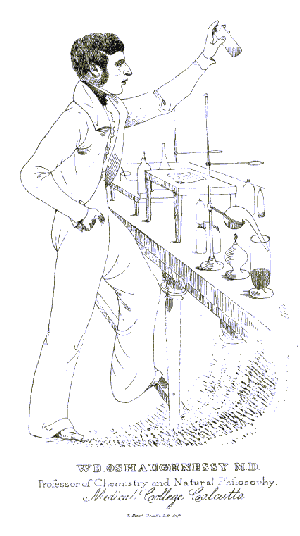|
|
|---|
| OBSOLETE: [Enlarged & Updated] Historical Section: www.antiquecannabisbook.com/chap2B/History.htm |
MEDICAL CANNABIS -- 100 AD -TO- 1838
The following (bit's and pieces) are taken directly from, "The (English Governments) House of Lords, Select Committee on Science and Technology 9th Report."
HISTORY OF THE USE OF CANNABIS
The earliest known reference to cannabis is in Assyrian tablets of the seventh century BC. It has thus been in use for at least 2600 years. . . In Western medicine, it appeared in the Herbal (i.e. pharmacopoeia) of Dioscorides of about 60 AD, and in all subsequent herbals. The 16th century saw a detailed interest in cannabis, with reports of it and its usages being sent back by many travellers to the East, and the number of possible uses given in the herbals doubled. In England, the Herbal of John Gerard (1597) recommended it as it "consumeth wind and drieth up seed [i.e. semen]", and quoted Dioscorides as recommending it for easing the pain of earache and for the treatment of jaundice. Nicholas Culpeper, in his Herbal (1653), gave the same indications for the use of cannabis seeds, and also recommended the decoction of the roots, as this "allayeth inflammations, easeth the pain of gout, tumours or knots of joints, pain of hips . . . "
"In these and other early Herbals, each medicine was said to have multiple uses, often without justification. More critical views ultimately prevailed, but only slowly. Thus by 1788 the New Edinburgh Dispensatory still included three quarters of the entries of Dioscorides, but excluded most animal products. Such exotic remedies as "scrapings of an elephant's tooth", "dust from the walls of a wrestling school" and, remarkably, as a cure for quartan malaria, "seven bed bugs in meat and beans", had been eliminated. The loss of the animal products and most of the minerals left the 1788 New Dispensatory consisting mainly of herbal remedies. There was little change for 150 years, and the British Pharmacopoeia of 1914 included most of the contents of the volume of 1788. But the situation was about to change radically, with the rise of synthetic pharmaceutical chemistry."
"Meanwhile, in 1833 Samuel Carey in his Supplement to the Pharmacopoeia and Treatise on Pharmacology advised that cannabis could be used to make "an agreeable intoxicating drink". This is the only British reference to cannabis as an intoxicant known to us from this period."
"Cannabis was reintroduced into British medicine in 1842 by Dr W O'Shaughnessy, an army surgeon who had served in India. In Victorian times it was widely used for a variety of ailments, including muscle spasms, menstrual cramps, rheumatism, and the convulsions of tetanus, rabies and epilepsy; it was also used to promote uterine contractions in childbirth, and as a sedative to induce sleep. It is said to have been used by Queen Victoria against period pains: there is no actual proof of this at all, but Sir Robert Russell, for many years her personal physician, wrote extensively on cannabis, recommending it for use in dysmenorrhoea. It was administered by mouth, not by smoking, but usually in the form of a tincture (an extract in alcohol). Cannabis extracts were also incorporated in many different proprietary medicines. [more] . . . "

Dr W O'Shaughnessy
 Back to the Last Section |
 BACK TO CHAPTER 1 |
 On to the Next Section |